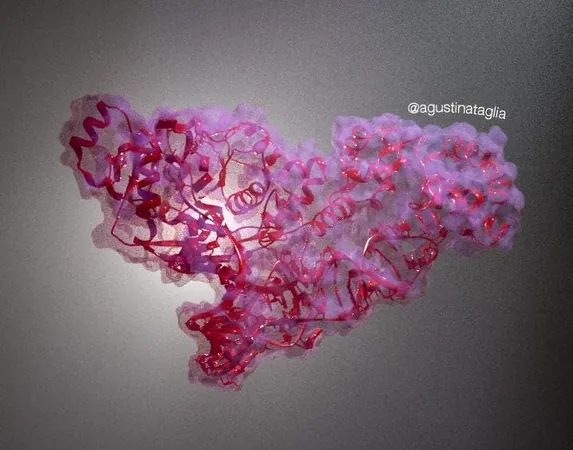
Unlocking Potential: How tRNA Could Revolutionize Disease Control
2025-09-22
Author: Noah
tRNA: From Courier to Key Player
Transfer RNA (tRNA), long perceived as just a messenger in the cellular landscape, is stepping into the spotlight with groundbreaking revelations. Recent findings published in *Nature Structural & Molecular Biology* unveil that this seemingly simple molecule plays a pivotal role in the intricate assembly of one of the cell’s most complex mechanisms, reshaping our understanding of gene regulation and disease intervention.
The Unexpected Role of tRNA
Traditionally, tRNA has been viewed merely as a transport vehicle, ferrying amino acids to the ribosome to aid in protein synthesis. However, emerging research suggests that tRNA is much more than a delivery tool; it acts as a vital assembly chaperone for large multi-protein complexes that carry out essential transcription and RNA processing functions.
These macromolecular complexes are critical for converting DNA into functional RNA and ensuring precision in RNA editing. With dozens of components involved, the challenge of proper assembly is significant. The new insights reveal that tRNA serves not just as a guide but also a stabilizing framework, directing components into precise formations much like a scaffold helps construct a building.
Why This Discovery Matters
Recognizing tRNA's role shifts our perspective on gene regulation. By steering the assembly of these crucial transcription complexes, tRNA is now seen as a linchpin in the conversion of genetic information into functional proteins. This process, known as gene expression, is vital for organismal development, adaptation, and response to environmental changes—all of which can be disrupted in various diseases.
This new understanding opens exciting possibilities for medical advancements. By leveraging or mimicking tRNA's chaperone capabilities, researchers might devise strategies to correct cellular dysfunctions.
Promising Preliminary Results
Initial studies indicate that tRNA not only speeds up the assembly of these protein complexes but also enhances stability, leading to fewer errors in genetic processing. Laboratory experiments show that the presence of tRNA allows for faster and more accurate formation of these complexes. Its unique L-shaped structure, conserved across all life forms, hints at an evolutionary optimization for transport and molecular interactions.
A New Avenue for Disease Treatment
Some early clinical trials have started exploring tRNA's potential as a therapeutic agent. Engineered tRNA molecules designed to correct genetic decoding errors have shown promise in restoring normal protein synthesis in certain rare diseases caused by premature mutation-induced halts in protein production.
A Paradigm Shift in Understanding
This research challenges long-held views, placing tRNA in a critical role within cellular processes. Just as small RNA fragments previously thought to be nonfunctional have proven essential for gene regulation and cancer biology, tRNA’s newfound importance illuminates the hidden capabilities of familiar molecules.
While much research remains to validate these findings in diverse biological contexts and to develop safe methodologies for tRNA therapy, the potential is immense. As we dive deeper into the functions of tRNA, we may unlock new therapies and biotechnologies that enhance human health and expand our biological frontiers.
Conclusion: The Future of tRNA Research
In summary, this novel insight repositions tRNA as a critical architect of gene regulation, paving the way for innovative medical strategies. The lesson here underscores that well-known molecules often possess underappreciated roles, and as we further investigate tRNA's assembly chaperone function, we may very well redefine treatments for numerous diseases.









 Brasil (PT)
Brasil (PT)
 Canada (EN)
Canada (EN)
 Chile (ES)
Chile (ES)
 Česko (CS)
Česko (CS)
 대한민국 (KO)
대한민국 (KO)
 España (ES)
España (ES)
 France (FR)
France (FR)
 Hong Kong (EN)
Hong Kong (EN)
 Italia (IT)
Italia (IT)
 日本 (JA)
日本 (JA)
 Magyarország (HU)
Magyarország (HU)
 Norge (NO)
Norge (NO)
 Polska (PL)
Polska (PL)
 Schweiz (DE)
Schweiz (DE)
 Singapore (EN)
Singapore (EN)
 Sverige (SV)
Sverige (SV)
 Suomi (FI)
Suomi (FI)
 Türkiye (TR)
Türkiye (TR)
 الإمارات العربية المتحدة (AR)
الإمارات العربية المتحدة (AR)